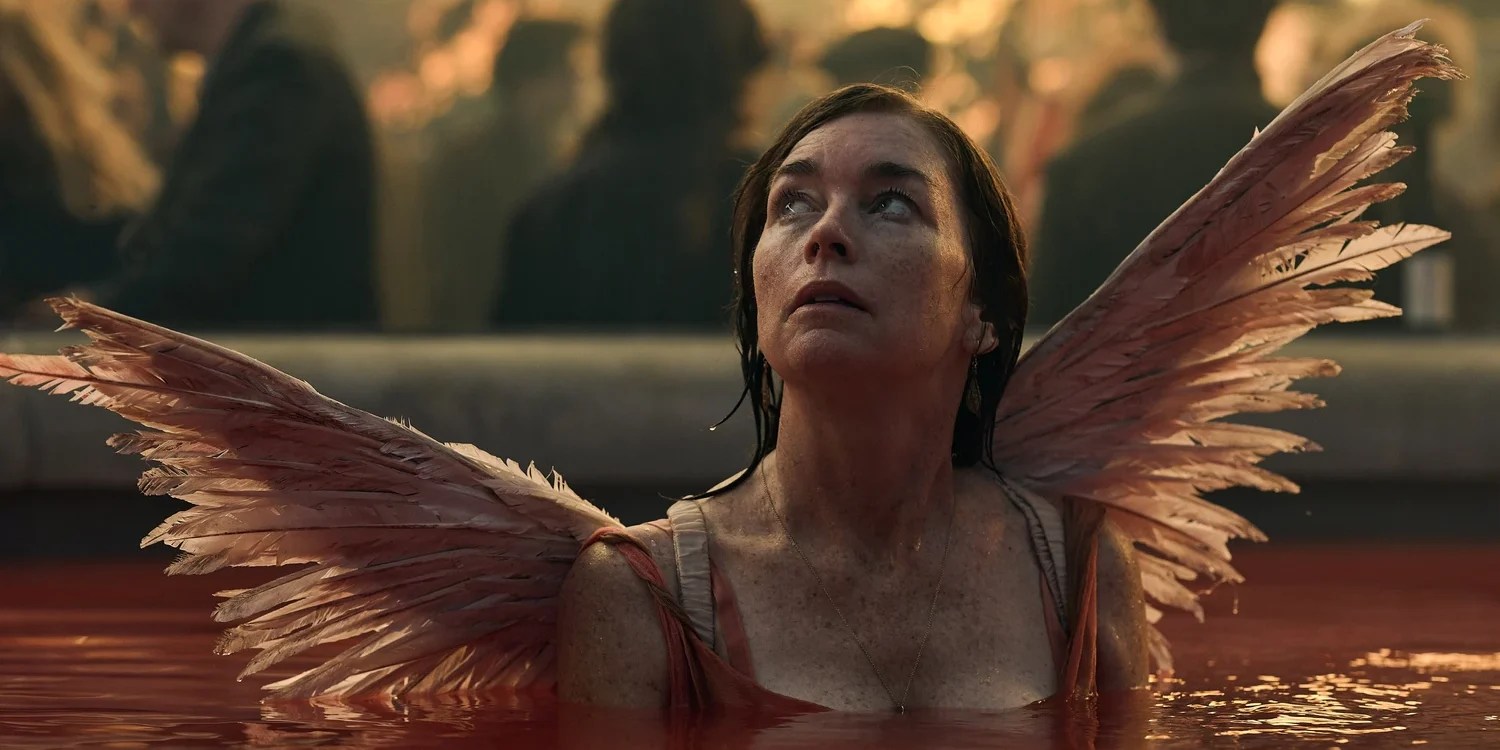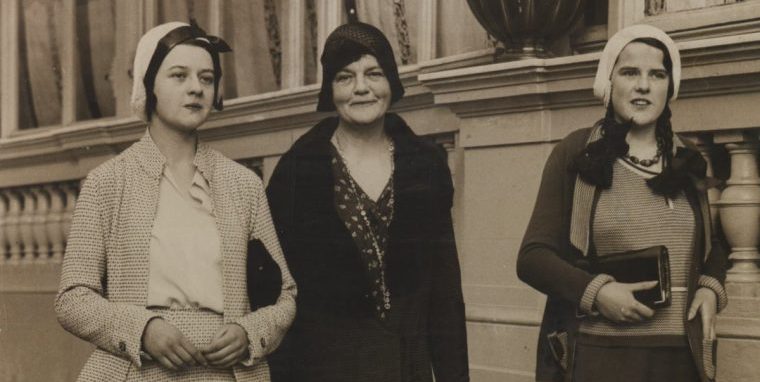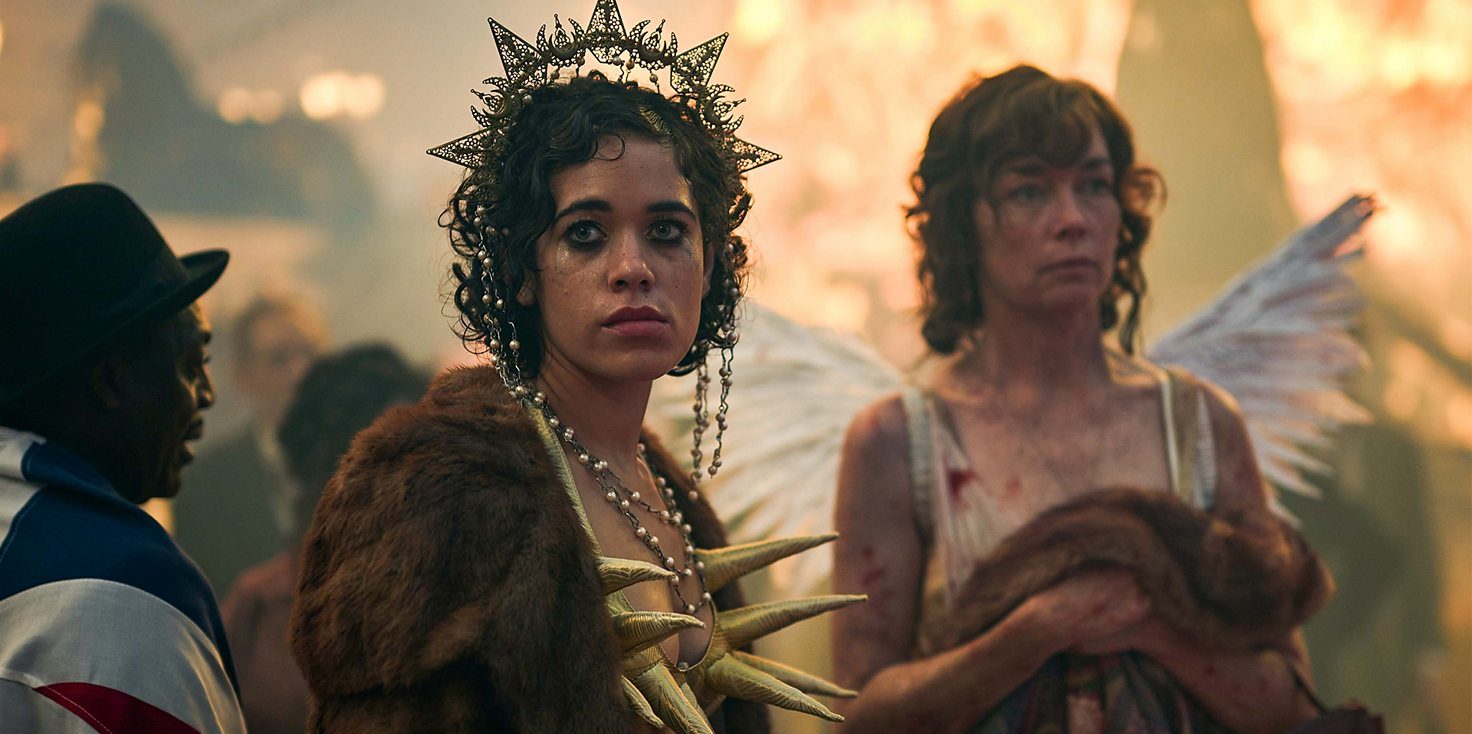Hulu’s ‘Dope Girls’ is a historical crime drama set after the end of the First World War in London. It follows the life of a woman named Kate Galloway, who establishes a nightclub in Soho to gain influence and also enable the better futures of her daughters. However, in the post-war chaos of London, she finds herself in danger from the police and the Salucci gangster family, threatening to crush her dreams and ambitions. The Polly Stenham and Alex Warren creation takes a look at the brutal underworld of the city during the tumultuous inter-war period and explores the themes of freedom, survival, and crime. The narrative delves into the ideas of familial bonds, police corruption, the motivations of gangsters, and the rise of women in the world of crime.
Dope Girls is Partly Inspired By Real-Life Scenarios in Post-War London
Though the series is fictional, it is partly based on the book ‘Dope Girls: The Birth of the British Drug Underground’ by Marek Kohn. The creators also served as co-writers with Matthew Jacobs Horgan, Amelia Spencer, Roanne Bardsley, and Elinor Cook. The writing is inspired in parts by the book and the writing team’s understanding of the reality of the time period in which the narrative is set. It is interesting to note that the storyline and the lead character of Kate Galloway are partly based on the life of an Irish woman named Kate Meyrick. She was often referred to as the most dangerous woman in London during the chaotic post-war period. She was a mother to eight kids and had separated from her husband in 1918.

Similar to the lead character in the show, the real-life Kate suffered extreme financial troubles and found herself in need of a radical change in fortune. She went on to establish a nightclub in Leicester Square, which was followed by the founding of other similar establishments centered around narcotics, sex work, and other illegal activities. Despite being jailed on several occasions, the lady went on to run her empire till her death at the age of 57 in 1933. The opening titles of each episode in the series make it clear that while the show is inspired by a forgotten time in London’s history, the storyline and the main characters originated from the minds of the creators.
In an interview with Radio Times, executive producer Jane Tranter explained that though the book was an important resource, several parts of the drama were based on the understanding of many different sources. In the same interview, when talking about his work with Polly Stenham, Alex Warren stated, “The book is a non-fiction account of the time, of what was happening in Soho, and all the colourful characters that were there.” He also opined that they were inspired by the characters in the book, but also let their imaginations into the creative process.
Stenham found the book many years before the inception of the show, but the collaboration with Warren came much later when they decided to delve into old archives related to police records and interesting stories from the past. During and after the First World War, the use of drugs like morphine and cocaine, once readily available in chemist shops, escalated into a national crisis. The show captures the chaos and confusion of the time through its depiction of London and the issues that it faced. While the Defence of the Realm Act in 1916 introduced some restrictions, it wasn’t until the 1920 Dangerous Drugs Act that the production and consumption of these substances became illegal. The criminalization of drugs played a major role in the city, just like it does in the show.
The Lives of Real Individuals Add Authenticity to the Narrative

Kate Meyrick’s life was a tale of danger, hope, despair, and resistance against authority. This is reflected in the portrayal of Kate Galloway’s character by Julianne Nicholson. In the show, the protagonist fights for her daughter, Evie, but the real-life Kate had to fight for eight children. Her clubs, like the famous 43 Club on Gerrard Street, reportedly attracted a diverse crowd, including gangsters, IRA members, and Hollywood stars such as Rudolfo Valentino and Tallulah Bankhead. Despite being consistently shut down by the Metropolitan police after raids, she would quickly open new establishments to cater to the demands of the clients.
Kate achieved a level of popularity that made her a target for the media and also caught the attention of writers like Evelyn Waugh. As per reports, while conceiving the character of Ma Mayfield, a nightclub owner, in his 1945 novel, ‘Brideshead Revisited,’ he drew inspiration from the life of Kate. In an interview with the BBC, Julianne Nicholson stated, “Kate’s primary motivation is taking care of her daughters. When she gave Billie up all those years ago, her intention was to come back and collect her – and she was not able to do that. It’s very complicated because Billie is now a grown woman, so there’s disappointment and rage there.” The show honors the legacy of the woman by portraying the protagonist as a strong and independent woman who fought for her survival, which, of course, finds its basis in reality.
Billie Carleton, a musical comedy actress, served as the inspiration behind the character of Billie Cassidy in the show. Born Florence Leonora Stewart, she achieved fame as the youngest leading lady in London’s West End theatre scene. The show portrays her life in an authentic manner, and it is also aided by the performance of Umi Myers. In reality, tragedy struck on November 27, 1918, when, after attending a Victory Ball at the Royal Albert Hall, she returned to her apartment at Savoy Court Mansions. The next day, her maid discovered her dead at the age of 22.

A coroner’s investigation into the matter revealed that Billie died from a cocaine overdose, due to the abuse of drugs supplied by her friend, Reggie de Veulle, who subsequently pleaded guilty. In a BBC interview, Umi Myers described the characters she and the other actresses portray as morally complex, existing in a grey area between good and bad. She further elaborated that these women make highly controversial decisions, yet are driven by love and strive to navigate a world that is oppressive for women. The public was both fascinated and horrified by the death of Carleton as details emerged about the pervasive drinking and drug use within her social circles, turning her untimely demise into a major scandal.
The character of Eddie Cobb (Michael Duke) likely draws inspiration from the tragic life of Edgar Manning, infamously known as the “Dope King” of post-war London. He was a jazz musician who gained notoriety as a drug trafficker. The narrative authentically portrays his trials and tribulations, as well as the truth about his personality. His frequent arrests ensured his name was a regular occurrence in the press. In 1929, he received a three-year prison sentence after being convicted of car theft and other property-related crimes. He was also arrested for drug-related crimes and was referred to as a “pedlar of dope” by the media and society. His connection to narcotics made him a dangerous man, often finding himself in trouble with the authorities.
Dope Girls Offers Commentary on Consequential Social Themes
One of the core themes of the show is its depiction of the struggles of women in London’s society after the First World War. Through the eyes of Kate Galloway, we see how women had to give it their all just to survive in the harsh, male-dominated society of the city in the 1920s. In an interview with the BBC, the executive producer Jane Tranter said that one of the main themes of the series is the exploration of how difficult life was for women in London in the 1920s. The character of Violet Davies (Eliza Scanlen) represents the first generation of female police officers in the city of London. She goes undercover as a sex worker to investigate the underworld and also help women escape the clutches of exploitation and the criminal underworld.

The show navigates how a female police officer, who isn’t used to power and authority, navigates the world of law enforcement, and also reconciles with her own biological reality and a mistake from her past. The show also looks at the queer community through a nuanced lens. The character of Eddie Cobb is queer and finds himself in the dangerous world of the drug trade. Michael Duke, who plays Eddie in the show, opined that the main goal of the character is to challenge social conventions and also fight the stereotypes that harm the autonomy of queer people. The idea of liberation from the constraints of society is represented by Eddie, who forges his own destiny, despite everything that stands against him.
Hedonism is another theme that finds representation in the show. The society of London was overcome by the euphoria of the end of the war, especially due to the return of soldiers, and this led to the pursuit of happiness and pleasure, often leading to abuse and chaos. The show captures the reality of the time by showing how people were desperate to gain pleasure, even at the expense of their own lives. The very idea of nightclubs, sex, and narcotics was driven by the Hedonism of the time, which created tremendous opportunities and risks for the people who inspired the creation of the characters in the show.
Read More: Shows Like Under a Dark Sun


